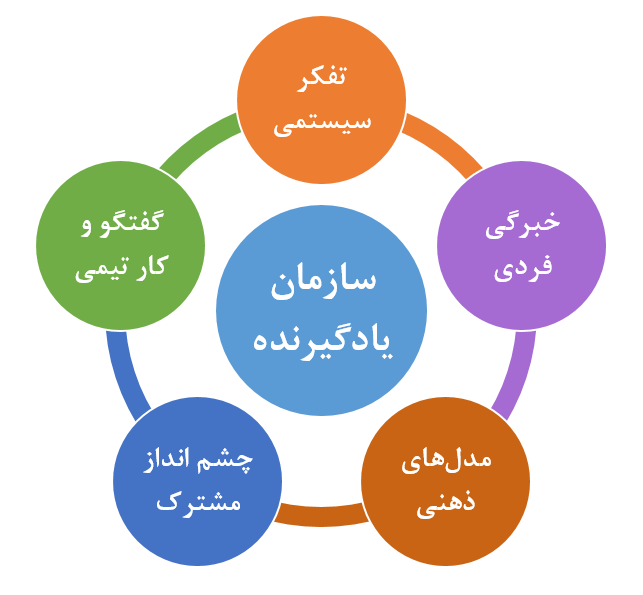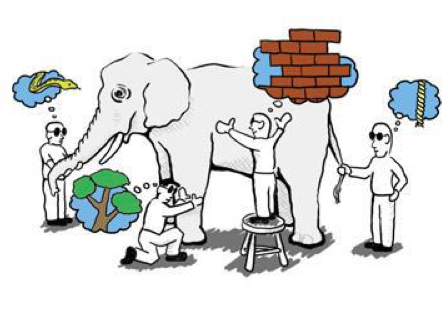تفکر سیستمی در «سازمانهای یادگیرنده»

منابع مطالعه برای این جلسه:
2006, Peter Senge, The Fifth Discipline: The Art and Practice of the Learning Organization
Chapter 1: “Give Me a Lever Long Enough … and Single-Handed I Can Move the World”
Chapter 2: Does Your Organization Have a Learning Disability?
Chapter 3: Prisoners of the System, or Prisoners of Our Own Thinking?
Chapter 4: The Laws of the Fifth Discipline
Chapter 5: A Shift of Mind
Chapter 6: Nature’s Templates: Identifying the Patterns That Control Events
Chapter 7: Self-Limiting or Self-Sustaining Growth
Chapter 1: “Give Me a Lever Long Enough … and Single-Handed I Can Move the World”
Chapter 2: Does Your Organization Have a Learning Disability?
Chapter 3: Prisoners of the System, or Prisoners of Our Own Thinking?
Chapter 4: The Laws of the Fifth Discipline
Chapter 5: A Shift of Mind
Chapter 6: Nature’s Templates: Identifying the Patterns That Control Events
Chapter 7: Self-Limiting or Self-Sustaining Growth
Disciplines of the Learning Organization
Systems Thinking
Personal Mastery
Mental Models
Shared Vision
Team Learning
Personal Mastery
Mental Models
Shared Vision
Team Learning
Organizational Learning Disabilities
- I am My Position
- The Enemy is Out There
- The Illusion of Taking Charge
- The Fixation on Events
- The Parable of the Boiled Frog
- The Dilusion of Learning from Experience
- The Myth of the Management Team
Prisoners of the System, or Prisoners of Our Own Thinking
Lessons of The Beer Game
- Structure Influences Behavior
- Structure in Human Systems is Subtle
- Leverage often comes from new ways of thinking
The Laws of the Fifth Discipline
- Today's problems come from yesterday's "solutions."
- The harder you push, the harder the system pushes back.
- Behavior grows better before it grows worse.
- The easy way out usually leads back in.
- The cure cam be worse than the disease.
- Faster is slower.
- Cause and effect are not closely related in time and space.
- Small changes can produce big results-but the areas of highest leverage are often the least obvious.
- You can have your cake and eat it too-but not at once.
- Dividing an elephant in half does not produce two small elephants.
- There is no blame
A Shift of Mind
SEEING THE WORLD ANEW
SEEING CIRCLES OF CAUSALITY
REINFORCING AND BALANCING FEEDBACK AND DELAYS: THE BUILDING BLOCKS OF SYSTEMS THINKING
REINFORCING FEEDBACK: DISCOVERING HOW SMALL CHANGES CAN GROW
BALANCING PROCESSES: DISCOVERING THE SOURCES OF STABILITY AND RESISTANCE
DELAYS: WHEN THINGS HAPPEN ... EVENTUALLY
SEEING CIRCLES OF CAUSALITY
REINFORCING AND BALANCING FEEDBACK AND DELAYS: THE BUILDING BLOCKS OF SYSTEMS THINKING
REINFORCING FEEDBACK: DISCOVERING HOW SMALL CHANGES CAN GROW
BALANCING PROCESSES: DISCOVERING THE SOURCES OF STABILITY AND RESISTANCE
DELAYS: WHEN THINGS HAPPEN ... EVENTUALLY
IDENTIFYING THE PATTERNS THAT CONTROL EVENTS
ARCHETYPE 1: LIMITS TO GROWTH
ARCHETYPE 2: SHIFTING THE BURDEN
ARCHETYPE 2: SHIFTING THE BURDEN
Self-Limiting or Self-Sustaining Growth
WHEN WE CREATE OUR OWN
"MARKET LIMITATIONS"
SEEING THE FOREST AND THE TREES
SEEING THE FOREST AND THE TREES
منابع مطالعه برای جلسه بعد
1985, Jay W. Forrester, "The" Model Versus a Modeling "Process"
19۹4, John Sterman, Learning In and About Complex Systems
2001, John Sterman, System Dynamics
Modeling:
Tools For Learning In a Complex World
2002, John Sterman, All models are wrong: reflections on
becoming a systems scientist
2010, Ali N. Mashayekhi, Soheil Ghili, System dynamics problem definition as an evolutionary process using the concept of ambiguity
2001, John Sterman, System Dynamics
Modeling:
Tools For Learning In a Complex World
2002, John Sterman, All models are wrong: reflections on
becoming a systems scientist
2010, Ali N. Mashayekhi, Soheil Ghili, System dynamics problem definition as an evolutionary process using the concept of ambiguity
2010, Ali N. Mashayekhi, Soheil Ghili, System dynamics problem definition as an evolutionary process using the concept of ambiguity
در پناه خدا باشیم
Previous
Next
